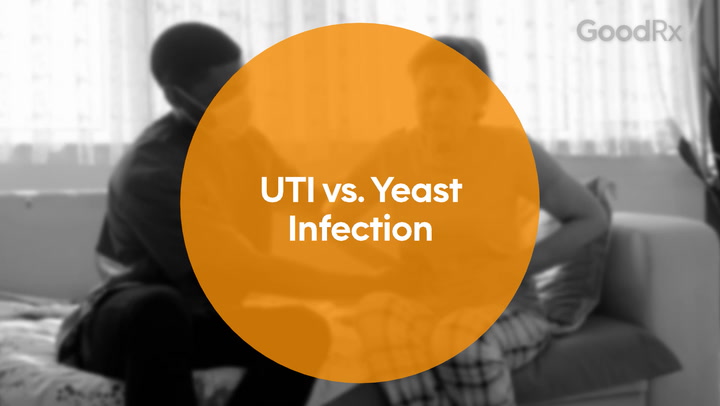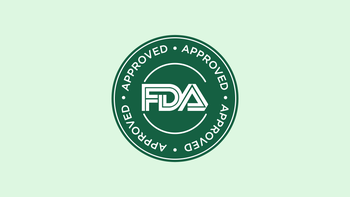
7 Fluconazole (Diflucan) Side Effects and How to Manage Them
Key takeaways:
Fluconazole (Diflucan) is an oral prescription antifungal medication. It treats fungal infections like yeast infections and oral thrush.
Common fluconazole side effects include nausea, headache, and stomach pain. Diarrhea is also possible. Mild side effects tend to resolve on their own or go away when you finish your treatment course.
Serious fluconazole side effects such as skin rash, liver damage, and heart rhythm changes are also possible. Contact your healthcare provider right away if you experience severe side effects after starting or finishing fluconazole.
Access savings on related medications
Table of contents
Fluconazole (Diflucan) is a common prescription antifungal medication. It’s approved to treat a variety of fungal infections, including yeast infections and oral thrush. You can take it by mouth, as a tablet or liquid, or receive it as an injection. Although fluconazole is generally effective and well-tolerated, it can cause side effects — ranging from mild to severe.
The likelihood of experiencing fluconazole side effects can depend on your dose and length of treatment. For example, side effects were more commonly reported by people taking a single fluconazole dose compared to those taking it for at least 7 days during clinical trials.
If you’ve been prescribed fluconazole, you may be concerned about potential side effects from treatment. Here, we’ll cover what you should know about seven fluconazole side effects and how to manage them if they occur.
Search and compare options
1. Nausea
Nausea is one of the most common side effects of fluconazole. Usually, nausea from fluconazole is mild and resolves after finishing a treatment course.
Fluconazole can be taken with or without food. But, taking it with food could help lower the chances of feeling nauseated afterwards. If you have nausea that won’t go away or becomes severe, let your healthcare provider know. They can help you figure out ways to handle your symptoms.
2. Headache
Headache is another common fluconazole side effect, especially when it’s taken as a single dose. Similar to nausea, the headaches tend to be mild and should resolve on their own.
There are a few things you can try to prevent or treat headaches at home. This includes drinking plenty of water and getting plenty of sleep. If it’s safe for you to take, an over-the-counter (OTC) pain reliever, like acetaminophen (Tylenol), can also help provide relief.
If your headaches become severe or won’t go away, talk with your provider. There may be other reasons you’re experiencing headaches, and they can recommend the best way to relieve your symptoms.
3. Stomach pain
Taking fluconazole may also cause stomach pain. Stomach pain from fluconazole is often mild. It may also go away on its own, especially after you finish your prescription.
There can be many different causes of stomach pain. If you’re having bothersome stomach pain, talk to your healthcare provider. They will help determine if it’s because of fluconazole or something else.
4. Diarrhea
Diarrhea is another possible, yet often mild, fluconazole side effect. As with stomach pain, there are many possible causes of diarrhea. Often, diarrhea will get better on its own in a few days.
If you’re experiencing diarrhea, you can try avoiding fatty or fried foods. Giving probiotics a try might also help. If home remedies aren’t helping, or if your diarrhea persists or gets worse, contact your healthcare provider for further instructions. They may suggest an OTC anti-diarrheal medication or other treatments, depending on the cause.
5. Skin rashes
Skin rashes are another possible fluconazole side effect. This side effect wasn’t reported in trials of people taking a single dose of fluconazole. But some people with longer treatment courses reported skin rashes.
If you get a rash after starting fluconazole, let your healthcare provider know right away. They may want to watch the rash closely and/or instruct you to stop taking fluconazole. While rare, serious and potentially life-threatening skin problems have been reported by some people taking fluconazole.
Keep in mind: Getting a skin rash while taking fluconazole can also be a sign of a severe allergic reaction (anaphylaxis). In this situation, the rash might be accompanied by hives, blisters, or skin peeling. Go to your nearest emergency room if this happens.
6. Liver damage
In rare cases, fluconazole can cause liver damage. Some cases of liver damage from fluconazole are mild and don’t have any apparent symptoms. More severe cases are rare, but possible. Most people with liver damage are able to recover after stopping fluconazole.
Signs of liver damage can include dark-colored urine, yellowing of the eyes or skin, and extreme fatigue. You might also have itching across your body and light-colored stool. If you notice any of these symptoms while taking fluconazole, tell your healthcare provider right away.
If you already have liver damage before starting fluconazole, you may be more likely to develop severe liver problems. Your provider may want to monitor your liver function more closely during treatment.
7. Heart rhythm changes
While rare, heart rhythm changes, such as QT prolongation, are possible when taking fluconazole. QT prolongation is when the heart takes longer than normal to recharge between beats. In some cases, this can lead to serious heart rhythm problems.
Symptoms of QT prolongation can include lightheadedness, blurry vision, and heart palpitations. Fainting is also common, especially while exercising. Get immediate medical attention if these symptoms develop while taking fluconazole.
The risk for QT prolongation increases if you take certain medications that interact with fluconazole. These include amiodarone, quinidine, and others. Make sure to give your healthcare provider and pharmacist a current list of your medications. This will help them screen for interactions.
You can also have a higher risk for QT prolongation if you have kidney damage. Let your healthcare provider know if you have kidney problems before starting fluconazole.
When should you contact your healthcare provider about fluconazole side effects?
If you have any questions about fluconazole side effects at any point, you should contact your healthcare provider or pharmacist. They can help you navigate your symptoms and determine the best way to handle them.
You should also contact your provider if any side effects are bothersome or severe. These could include signs or symptoms of liver damage, such as severe stomach pain, yellowing of the eyes or skin, and extreme fatigue. You should also let them know if you feel abnormal heartbeats or develop a skin rash after starting fluconazole.
Most mild fluconazole side effects should resolve on their own. Side effects should also stop after you stop taking fluconazole. But before stopping fluconazole, make sure to check with your healthcare provider first.
The bottom line
Common fluconazole side effects include nausea, headache, and stomach pain. Severe side effects, such as liver damage and heart rhythm changes, are rare but possible.
Taking only a single-dose regimen of fluconazole may be more likely to cause side effects than taking it for a week or longer. But any side effects from the single-dose regimen may go away more quickly as well.
Most mild fluconazole side effects should resolve on their own. But, if your side effects aren’t going away or become severe, let your healthcare provider know. You may need to stop taking fluconazole. But always check with your healthcare provider first before stopping the medication.
Why trust our experts?



References
Al-Akchar, M., et al. (2022). Long QT syndrome. StatPearls.
Roerig. (2023). Diflucan- fluconazole tablet. Diflucan- fluconazole powder, for suspension [package insert].
Was this page helpful?
Related Articles
Browse medications
View AllResearch prescriptions and over-the-counter medications from A to Z, compare drug prices, and start saving.


























